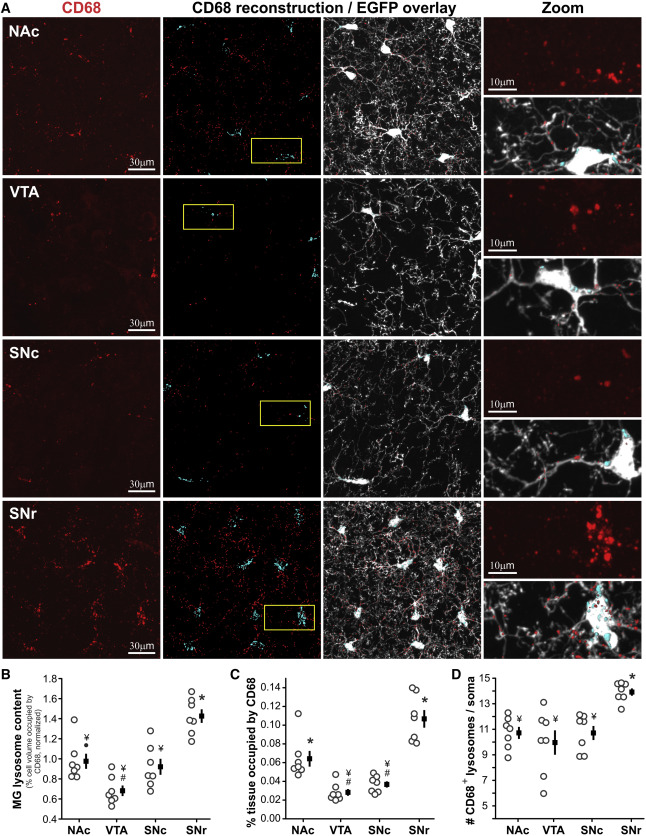Hot Off the Press! – July 2017
Biase, Lindsay M De; Schuebel, Kornel E; Fusfeld, Zachary H; Jair, Kamwing; Hawes, Isobel A; Cimbro, Raffaello; Zhang, Hai-Ying; Liu, Qing-Rong; Shen, Hui; Xi, Zheng-Xiong; Goldman, David; Bonci, Antonello
Local Cues Establish and Maintain Region-Specific Phenotypes of Basal Ganglia Microglia. Journal Article
In: Neuron, vol. 95, no. 2, pp. 341–356, 2017, ISSN: 1097-4199 (Electronic); 0896-6273 (Linking).
@article{Biase2017,
title = {Local Cues Establish and Maintain Region-Specific Phenotypes of Basal Ganglia Microglia.},
author = {Lindsay M De Biase and Kornel E Schuebel and Zachary H Fusfeld and Kamwing Jair and Isobel A Hawes and Raffaello Cimbro and Hai-Ying Zhang and Qing-Rong Liu and Hui Shen and Zheng-Xiong Xi and David Goldman and Antonello Bonci},
url = {https://www.ncbi.nlm.nih.gov/pubmed/28689984},
doi = {10.1016/j.neuron.2017.06.020},
issn = {1097-4199 (Electronic); 0896-6273 (Linking)},
year = {2017},
date = {2017-07-19},
journal = {Neuron},
volume = {95},
number = {2},
pages = {341--356},
address = {Intramural Research Program, National Institute on Drug Abuse, National Institutes of Health, Baltimore, MD 21224, USA. Electronic address: lindsay.debiase@nih.gov.},
abstract = {Microglia play critical roles in tissue homeostasis and can also modulate neuronal function and synaptic connectivity. In contrast to astrocytes and oligodendrocytes, which arise from multiple progenitor pools, microglia arise from yolk sac progenitors and are widely considered to be equivalent throughout the CNS. However, little is known about basic properties of deep brain microglia, such as those within the basal ganglia (BG). Here, we show that microglial anatomical features, lysosome content, membrane properties, and transcriptomes differ significantly across BG nuclei. Region-specific phenotypes of BG microglia emerged during the second postnatal week and were re-established following genetic or pharmacological microglial ablation and repopulation in the adult, indicating that local cues play an ongoing role in shaping microglial diversity. These findings demonstrate that microglia in the healthy brain exhibit a spectrum of distinct functional states and provide a critical foundation for defining microglial contributions to BG circuit function.},
keywords = {},
pubstate = {published},
tppubtype = {article}
}
Microglia play critical roles in tissue homeostasis and can also modulate neuronal function and synaptic connectivity. In contrast to astrocytes and oligodendrocytes, which arise from multiple progenitor pools, microglia arise from yolk sac progenitors and are widely considered to be equivalent throughout the CNS. However, little is known about basic properties of deep brain microglia, such as those within the basal ganglia (BG). Here, we show that microglial anatomical features, lysosome content, membrane properties, and transcriptomes differ significantly across BG nuclei. Region-specific phenotypes of BG microglia emerged during the second postnatal week and were re-established following genetic or pharmacological microglial ablation and repopulation in the adult, indicating that local cues play an ongoing role in shaping microglial diversity. These findings demonstrate that microglia in the healthy brain exhibit a spectrum of distinct functional states and provide a critical foundation for defining microglial contributions to BG circuit function.

